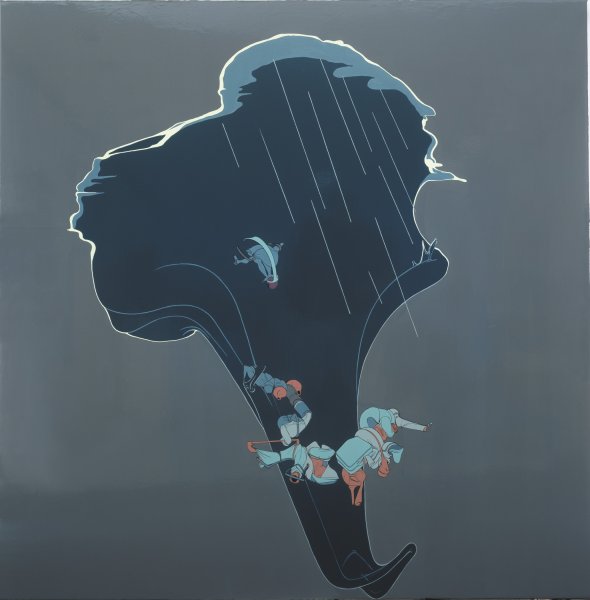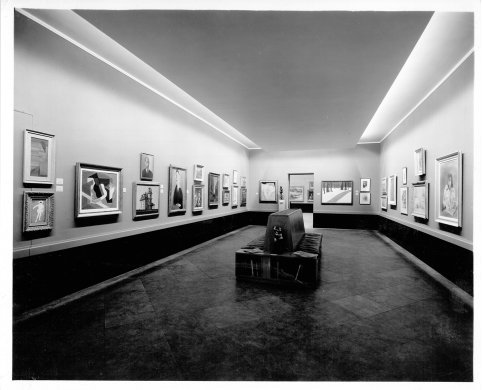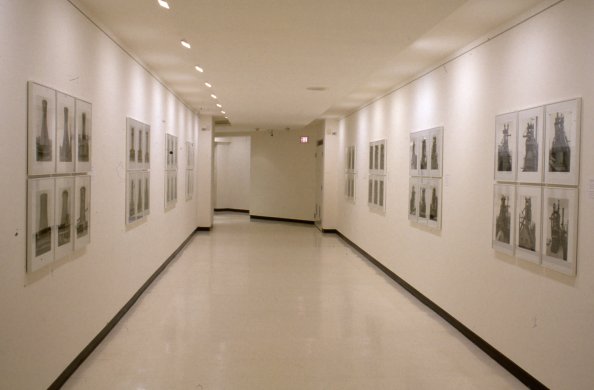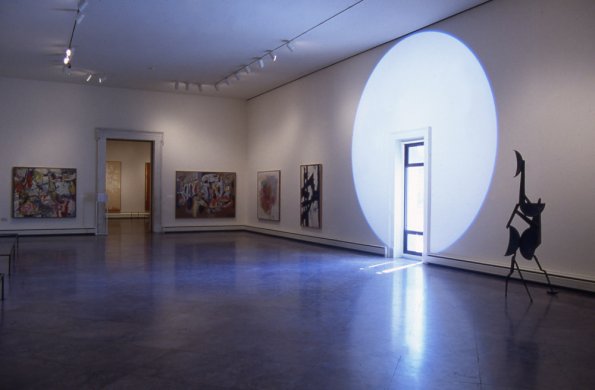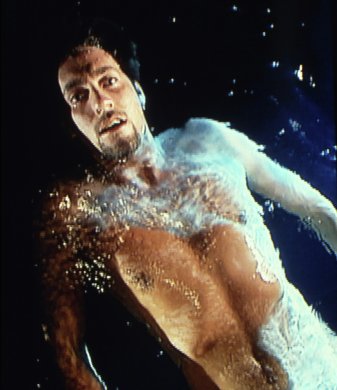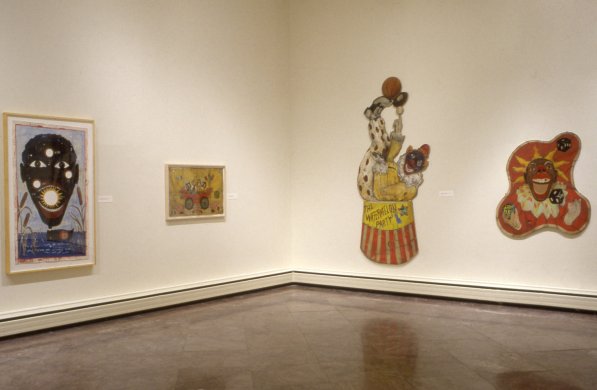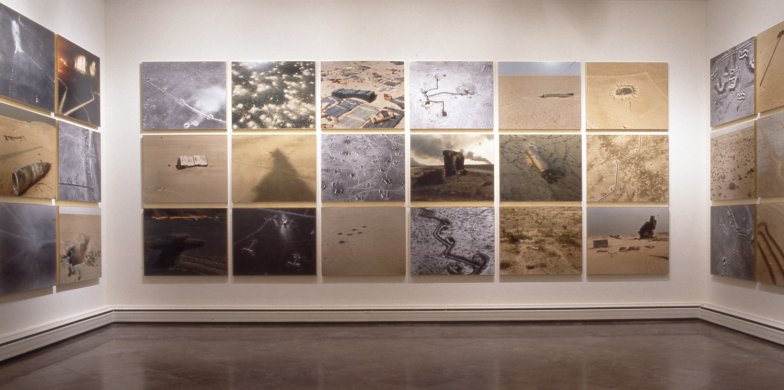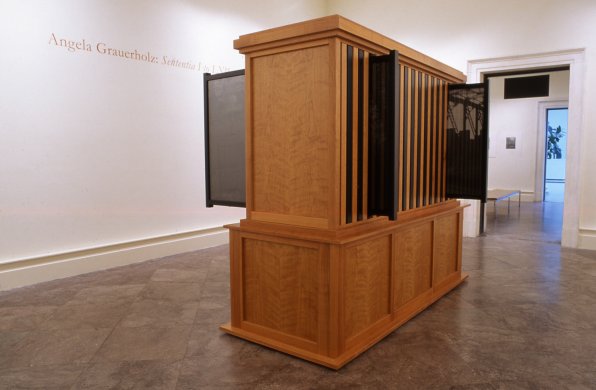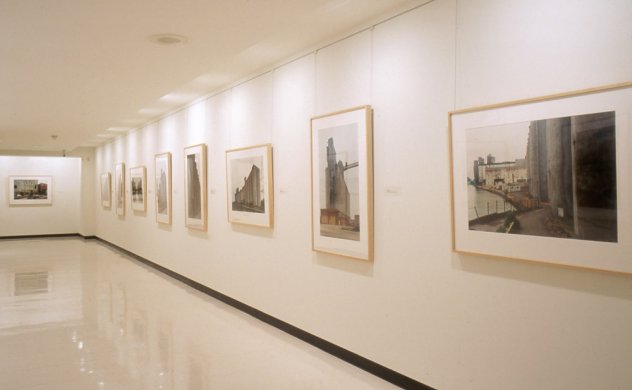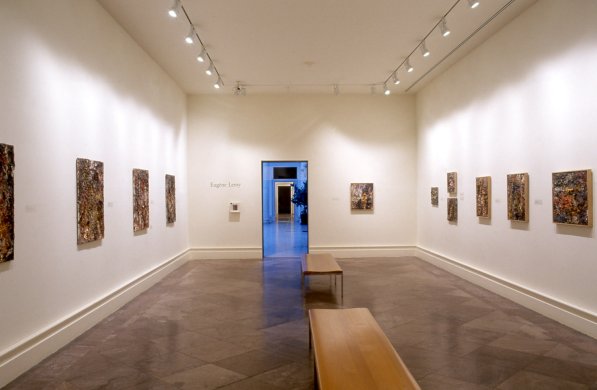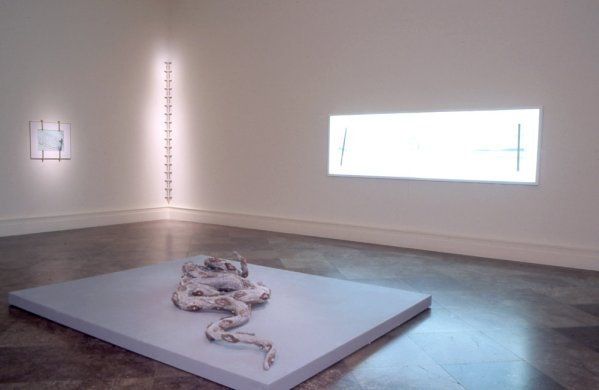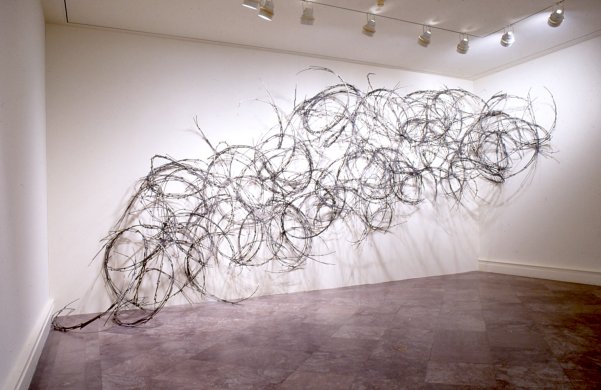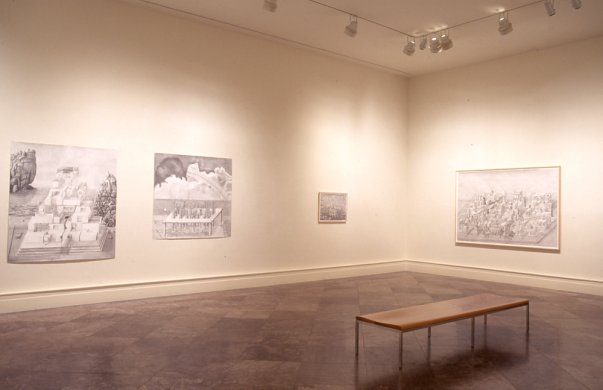American Landscape: Recent Paintings by Inka Essenhigh
Saturday, November 20, 1999–Sunday, January 2, 2000
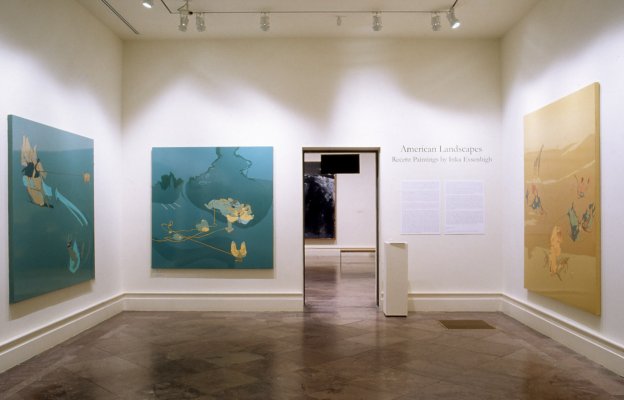
Installation view of American Landscape: Recent Paintings by Inka Essenhigh. Photograph by Tom Loonan.
1905 Building
The perfected design of an Inka Essenhigh painting, so seemingly resolved in every detail, belies the spontaneity that went into its creation. Her works are deceptive in this respect. Products of a process that combines drawing and painting with a lot of sanding, most pictures begin as a monochromatic color – blood red, turquoise blue, light green, khaki gray – which provides the ground for subsequent layers of rapid drying enamel-based oil paint. Drawing has been the driving force behind the work since 1996. An image may go through multiple revisions, where passages are sanded out or deleted with turpentine, but through linear articulation it's finally brought into focus. That the artist refers to her canvases as "giant drawings" confirms the primacy of draughtsmanship in her process.
Most discussions of Essenhigh's work gravitate to her conception of the figure, because it's such a prominent aspect of her images. Conceived against an otherwise neutral ground, figural ensembles are the grist of her compositions. Aptly described by one writer as "humanoid deformations," "cyborg-mutations," and "polymorphic droids," Essenhigh's race of cybernetic creatures provides a logical point of access to the work. Issuing from darker corridors inside the mind, Essenhigh's personages share an art-historical kinship with Arp's earliest biomorphs at the same time they cross over into another, virtual dimension. More the by-product of cybernetic animation than cellular microscopy, Essenhigh's atomized beings take their place, among other surreal anatomies cast by Tanguy, Matta, and Bacon, in what could be considered a time-honored tradition of abstract figuration.
"American Landscapes" doesn't immediately spring to mind as a thematic handle befitting these works. And yet, on some level, apart from obvious references to Mid-western cornfields or suburban malls, it seems appropriate, as we ponder the future of advanced technology, especially its effect on our perception of ourselves and our environment. Essenhigh's terrains, with their retinal-searing colors, polymer skin, and mutant tribe of survivors, forecast an ominous and inhospitable place devoid of light and atmosphere, deprived of seasonal changes, and stripped of local detail. Hers are entropic worlds ruled by a few benign but mostly violent forces. Though foreign to us, they could be seen as subconscious frontiers where the artist's subjective impulses have free reign. In the end, it doesn't matter whether or not we empathize with these worlds. What does are their philosophical implications – humanity's fate at the millennial cusp.
This exhibition was organized by Curator Douglas Dreishpoon, in conjunction with the New Room of Contemporary Art series.
About the New Room of Contemporary Art
The concept of the New Room of Contemporary Art echoes the mission and philosophy of its predecessor, the Room of Contemporary Art. Established in 1939, the Room was envisioned as a both a physical site devoted solely to the continuously rotating presentation of new art within the museum and a means to reinvigorate and reaffirm the museum’s dedication to collecting the art of its time.
It was managed by a special independent committee initially consisting of Buffalo attorney Philip J. Wickser (who helped to conceive the room and who drafted its charter), Seymour H. Knox, Jr., Albright Art Gallery Director Gordon B. Washburn, and artists Charles E. Burchfield and Anna Glenny Dunbar, both of whom called Buffalo home. Through the Room of Contemporary Art fund, the museum acquired Fernand Léger's La fume (Smoke), 1912; Joan Miró's Carnaval d'Arlequin (Carnival of Harlequin), 1924–25; and Henri Matisse's La Musique (Music), 1939, among many others.
